Editor’s Note: This is the first of two columns on James Robenalt’s January 1973: Watergate, Roe v. Wade, Vietnam, and the Month That Changed America Forever
This is a totally collusive two-part series of columns in which I hope to share a few points from a new book written by my friend, Jim Robenalt, a highly successful trial attorney and a partner in the Cleveland-based multi-state law firm ThompsonHine. Jim is my partner in presenting Continuing Legal Education (CLE) programs for attorneys where we retroactively apply the ABA’s Model Rules of Professional Ethics to select situations that I confronted during Watergate. (See also Ronald D. Rotunda & John S. Dzienkowski, Legal Ethics: The Lawyer’s Deskbook on Professional Responsibility, our principal source books, when not talking directly with Ron.)
Because of a surprising popular demand for our program—surprising in that although we have no sales or marketing for the three-hour program(s), it has spread by word of mouth to over 100 venues—Jim has done a lot of research about Watergate. I am not talking secondary source material. Rather, he prepared for our CLEs like he might a trial, by going to primary source material—Nixon’s secret tapes, the Senate Watergate hearing transcripts, Watergate Special Prosecutor documents, Nixon White House documents, autobiographies and diaries of the key players, etc., etc.—so he truly came to understand what had occurred.
He did not merely discover what had occurred; he found information no one else had noticed. For example, Jim discovered that Rose Mary Woods could not have erased the infamous 18.5-minute gap on June 20, 1972, tape by locating a witness who was never called due to Nixon’s resignation, but who said it was mechanically impossible for Rose to do what she said on the Uher 1000 because it was designed to prevent that very type of erasure. That is only one of many discoveries his fresh eyes and sharp mind spotted.
I refer to our CLE programs in the plural because we had so many people request additional programs on the same general subject that we prepared three separate three-hour programs (there were lots of mistakes by lawyers during Watergate so no shortage of material for CLEs). The demand for these additional programs is the reason Jim spent a lot of time researching Watergate. When he was looking at January 1973, he again noticed things no one else had spotted, at least publicly. So that was when he decided to write a book about the subject, and he asked me to write the foreword. I was hesitant to commit to writing the foreword until I saw the whole work. Indeed, many of his early findings were old news to me, so I developed something of a mantra: “Tell me something I don’t know about January, 1973.” Well, that is exactly what he did, as I explain in the foreword.
The book has received terrific reviews. I particularly enjoyed the review by Sanford Levinson, who does not toss bouquets to many authors. Yet he noted of Jim’s book: “[H]e has written a truly first-rate book, based on new sources, especially recently-released tapes of conversations at the Nixon White House, and provides genuine illumination about all of the issues he discusses. There is no reader who can’t benefit from Robenalt’s research, presented in vivid and arresting (and always well-documented) prose.” Because the book truly is a first-rate work, I thought notwithstanding my friendship with Jim, I should use this space to call attention to it by interviewing Jim, which we did by email.
QUESTION: You have news about all of these stories—Watergate, Roe v. Wade, Vietnam, and the death of two presidents—and the reactions President Nixon to those deaths. Can you tell us a bit about your sources?
ROBENALT: Working with you on our CLE programs has given me a PhD in Watergate and the Nixon tapes, so that was my start. No one knows better than you that the Nixon tapes are a treasure like no other in the study of the presidency, leadership, and decision making. But I discovered no one truly and deeply mined the tapes of January 1973, a remarkable month, and they are rich. So I started by focusing on the tapes from Nixon’s landslide re-election in November 1972 to the Christmas Bombings in December 1972. Then, of course, the January 1973 tapes.
Secondly, because of our CLE program in Phoenix, Arizona, we met Larry Hammond, a practicing lawyer who attended the program. Larry was Justice Lewis Powell’s law clerk in 1972-73 when Roe v. Wade and its companion, Doe v. Bolton, were decided. Larry by coincidence went from his Supreme Court clerkship to the Watergate Special Prosecution Force in the summer of 1973, so he had a keen interest in our CLE program on Watergate. Larry allowed me to interview him for the book, and he turned out to be an invaluable source, for I was the first person to talk with him after the Powell Papers were released. And what he had to tell me about how Roe was decided was crucial. Turns out, Larry and Justice Powell are the silent architects of Roe. Larry is the one who recommended the viability standard that is still the law of the land today. But I know you want to turn to Roe in the second column so I will move on.
For Vietnam, I used the State Department archives, which contain all of the memos and classified cables outlining the Paris Peace Accord and the simultaneous negotiations with the South Vietnamese, who were not in Paris. Combine those documents with the Nixon tapes, where Nixon and Kissinger talk in detail about their strategies and goals, and you get a very complete picture of the negotiations to end the war for the United States. Bottom line: Nixon and Kissinger knew the peace was unlikely to last, but they also knew for domestic political purposes they had to end the war or face a certain cut-off of funding from Congress.
Finally, the New York Times archives are a nice online resource, not to mention the Times accounts for 1973 have transcripts for most major press conferences and speeches. So it was an in-depth examination of these and related documents that helped me flush out the events of January 1973.
QUESTION: What was greatest discovery for you personally from listening to the Nixon tapes?
ROBENALT: I was most surprised by a conversation between Nixon and his special counsel Charles “Chuck” Colson on the night before Nixon’s second inaugural. Nixon outlined how he was going to apply the “Nixon Doctrine” from foreign affairs to domestic affairs.
QUESTION: Meaning?
ROBENALT: As you know, presidential inaugurations are something like mission statements for a presidency. They explain a leader’s vision, his call to action for the nation, and are usually seen in retrospect as distinct markers in times of national transformation. Such was the case with Nixon’s second inaugural, yet his plans and outline for the nation are almost entirely overlooked by historians, mainly because of Watergate. Undoubtedly, it is also largely unnoticed because of the enormity of the events of January 1973, which was such an historic month even without an inauguration.
In the course of that packed month, great changes were portended. Reflecting now over forty years later, it can be seen a significant disruption, something akin to a 9.0 magnitude earthquake on history’s Richter scale. During a brief span of thirty days: Harry Truman died and was buried, federal judge John Sirica presided over the Watergate burglars’ trial, Henry Kissinger negotiated the end of the Vietnam War for the United States, and Richard Nixon was sworn in for a second term. Two days later, the United States Supreme Court decided Roe v. Wade, and that same afternoon Lyndon Johnson died at his ranch in Texas. All these events had eerie connections and were filled with symbolism, which I explain in the book. It was figuratively the end of the New Deal, the terminus of the experiment called the Great Society, and the start of the Nixon cultural wars with ideological divisiveness becoming a way of life in government. As I see it, idealism, under its own always-heavy weight, gave way to cynicism.
Certainly Roe v. Wade had one of the greatest impacts, and you cannot understand our political deadlock today without coming to grips with this case, how it was decided, and its role in splintering our body politic. So I look forward to discussing that further in our next Q & A.
But it really was the convergence of all of the events of January 1973, this unusual amalgamating that formed what can now be seen as a perfect political storm, which caused this epic shift in our national affairs. At the center of that storm stood one man: Richard Nixon. People today love to attribute, for good or ill, the change that came from this period of national life to Ronald Reagan. They even call it the “Reagan Revolution.” For those willing to look closer, as I do in my book, the fact is we live in the shadow of a “Nixon Counterrevolution,” and January 1973 was its high watermark.
That is why I find the pre-inaugural exchange between Nixon and Colson so stunning; it helps illuminate the point. It took place in the wee hours of January 20, 1973, less than twelve hours before Richard Nixon took the oath of office for a second time at noon in front of the Capitol. Nixon read to Colson parts of his inaugural address (he called it his “acceptance speech”). In this recorded call one can find the seeding of the Nixon Counterrevolution.
QUESTION: Where was Nixon when he made this dead-of-the-night call?
ROBENALT: As you, of course, know, he made most all of his late-night calls from the White House residence, on the second floor, where he spent countless hours alone in the Lincoln Sitting Room. I found a good diagram of the White House along with the history of the rooms at the White House Museum online.
QUESTION: Step back for a moment and put some context around this Nixon-Colson call, if you would.
ROBENALT: To put context around the call, history requires we consider the forces that were provoking a massive backlash. The first is Harry Truman’s call for the containment of communism in the Far East at the time of the crisis in Korea, which, in turn, became the basis for America’s actions in Vietnam. Truman’s death and the conclusion of the Vietnam War for the United States marked the end of a particularly virulent time of American hubris. In short, we realized that the United States could, in fact, lose a war—despite what George C. Scott proclaimed in the opening scene of the popular 1970 movie Patton: “The very thought of losing is hateful to Americans.”
LBJ’s death on the day that Henry Kissinger flew off to Paris to initiate the Paris Peace Accords acted as something of a historical punctuation mark as we headed to this end point. Most biographers explain that the Vietnam War hastened not only LBJ’s political demise, as well as took its toll on his health, but it clearly diverted massive human and fiscal resources away from his Great Society programs, causing a major rift between him and Dr. Martin Luther King, Jr., who saw the war as unconscionable. So the Civil Rights Movement stalled.
Enter the foot soldiers of the counterrevolution. They were the “Silent Majority” as Nixon dubbed them, average Americans, blue collar “hardhats,” the “unyoung, unpoor, and unblack,” as Nixon’s favorite political scientists, Richard Scammon and Ben Wattenberg, christened them in their immensely influential book, The Real Majority. These voters feared the social change brought about by the student protesters and left-wing liberals. They were threatened by the chaos of the Civil Rights Movement and disgusted with the forced busing of their school children to achieve integration. They thought it was unpatriotic to oppose a war and saw the avalanche of Great Society legislation as insane and unfair to those who worked hard for a living and paid their taxes.
Nixon read Middle America’s mood with uncanny precision. He saw his landslide victory in November 1972 as a mandate to turn the clock back to a time when Washington did not dictate a message of paternalism to Americans. In Vietnam, his policy became one of self-reliance: “Vietnamization” was his term—meaning the United States should look to the people of South Vietnam to handle their own war. In January 1973, Nixon would extend a similar doctrine to the domestic sphere of the United States. Hence his remarkable conversation with Colson on January 20.
QUESTION: I have never listened to this conversation between Nixon and Colson, but I do know Nixon liked to use Chuck as a sounding board, so Nixon was clearly testing his ideas. And by the time of this conversation, I would not be surprised if Nixon had already had a few drinks.
ROBENALT: As I said, Nixon made the call from the Lincoln Sitting Room in the residence. He had been to the various inaugural parties at the Kennedy Center earlier that night and had clearly had several drinks. It was a cold night, so he had a fire burning in the fireplace when he asked the White House operator to get Colson on the line. Colson was on the phone within minutes, despite the fact it was one o’clock in the morning.
“Well, how’d you like the evening?” Nixon slurred, clearly showing his drinking. He and Colson compared notes on the three inaugural concerts but then got down to business quickly: “You want to hear a little of the acceptance speech?” Nixon asked. Colson, always a sycophant, responded: “Yes, I’d love to, sir.” After reciting lines about the limitations of American power in foreign affairs, Nixon told Colson how he wanted to apply the same message of self-sufficiency to domestic politics. “Just as building a structure of peace abroad has required turning away from old policies that failed,” he read, “so building a new era of progress at home requires turning away from old policies that failed.” Colson murmured, or more accurately purred, “Beautiful.”
“A person can be expected to act responsibly only if he has responsibility,” Nixon continued. “This is human nature. So let us encourage individuals at home and nations abroad to do more for themselves, decide more for themselves. Let us locate responsibility in more places.” Colson was aglow, and I don’t doubt that message still resonates with many if not most. Then Nixon took a line from Kennedy’s inaugural (“Ask not what your country can do for you—ask what you can do for your country”) and deliberately twisted it to fit his new dogma. Nixon’s twist: “In our own lives, let each of us ask—not just, ‘What will government will do for me?’ but ‘What can I do for myself?’” Colson was thrilled at the point: “Oh Jesus,” he quietly exclaimed.
What I draw from this, as I lay out in the book, and pull it all together, is that this was the start of the “me generation,” the one that Reagan would co-opt seven years later and call his own. It was the dramatic shift away from New Deal and Great Society and the belief that government should serve all, including the least among us. Or as Nixon put it: “America was built not by government, but by people—not by welfare, but by work—not by shirking responsibility, but by seeking responsibility.” Ronald Reagan could not have phrased it better.
What Nixon started would with time be supercharged by Roe v. Wade, decided two days after Nixon delivered his second inaugural. Roe caused the Religious Right and the Moral Majority to rise up and become politically active. Those on the right and left moved further apart, heading towards the extremes of their parties. Abortion was an issue that was not subject to compromise. It was a life-and-death issue to many. The politics of blocking, of obstructionism, and of no-compromise, got its start in January 1973. A direct line can be drawn from the evangelical movements of the 1980s and 1990s to the Tea Party obstructionism of today—who not unsurprisingly have been branded by some as “Teavangelicals.”
And, yes, Richard Nixon was the one who appointed the author of Roe—Harry Blackmun—to the Supreme Court. But as we will discuss next, he also put Lewis Powell on the Court—and as it turns out Powell actually had more to do with the establishment of the “viability” standard in Roe than did Blackmun. Until explaining this in my book, that fact had been little known or understood.
By the time Nixon ended his call with Colson, it was almost 2 a.m. That same morning, he would rise, jog in place five hundred steps to get himself going, dress, and head off for the start of what he thought would be “four more years.” Instead, he was about to bring on “our long national nightmare,” as Gerald Ford called it, which first became more widely understood with the trial of the Watergate burglars in January 1973.
QUESTION: Because I know your book, Jim, I look forward to resuming with Roe v. Wade, and the little known and understood information you uncovered.
ROBENALT: While I don’t want to scoop my book, I look forward to sharing that information with your readers. Thanks, John.







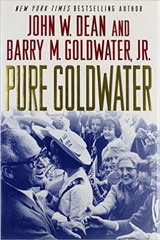
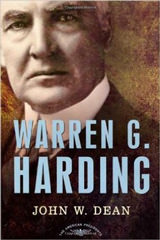
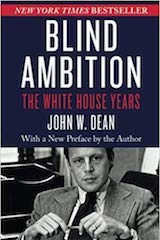
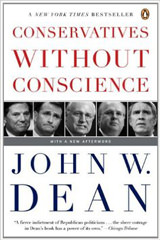
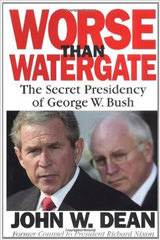
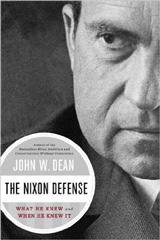
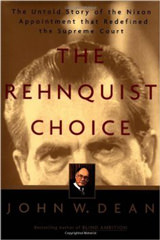

Just confirming it’s fixed. Now if we could only fix the gerrymandering so easily. Or should I put in a recommendation for “Flash Boys” by Michael Lewis, since the original comment was about another good book… Unfortunately, Mr Dean’s recommended book is unlikely to be available in my neck of the woods.